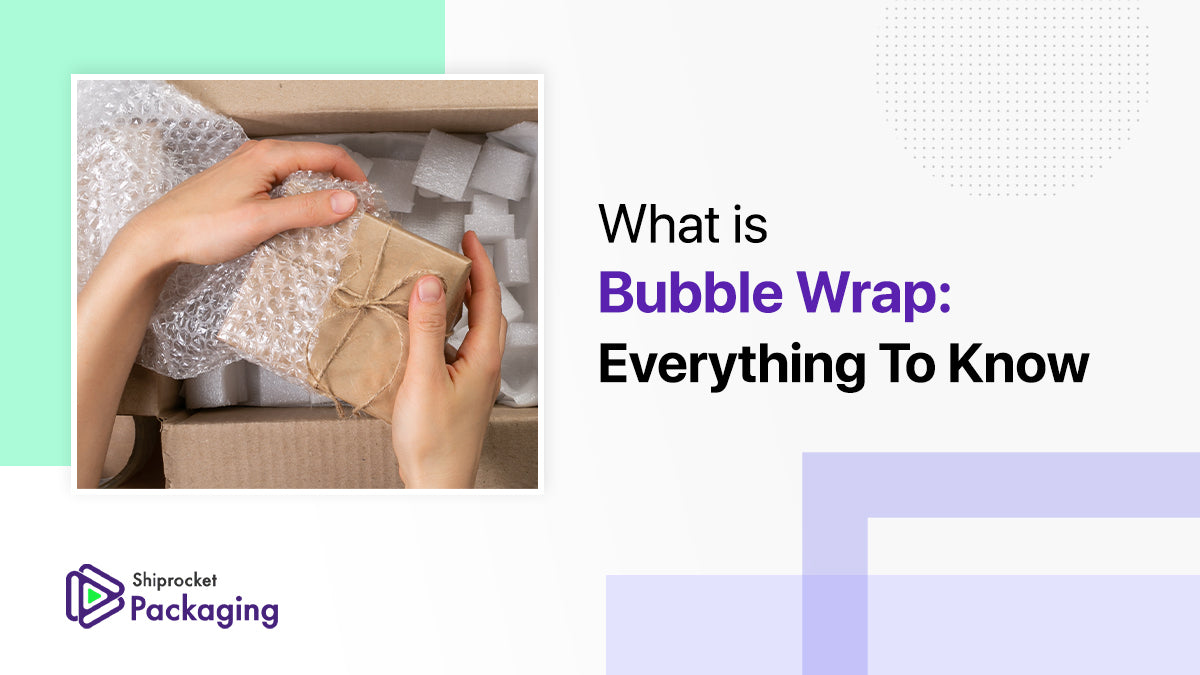Imagine the excitement of receiving a package, and as you unwrap it, you're greeted by a satisfying *pop-pop-pop* sound. That's the magic of bubble wrap! It is a packaging material that has transcended its practical purpose to become a source of simple joy. But there's much more to bubble wrap than meets the eye – it's a versatile and ingenious invention that has revolutionised packaging and protection across various industries.
In this comprehensive guide, we'll dive into everything you need to know about bubble wrap, from its history and composition to its myriad applications and environmental impact.
The Origins of Bubble Wrap
Bubble wrap wasn't always a staple of packaging materials. It was invented in 1957 by engineers Alfred Fielding and Marc Chavannes, who were originally attempting to create a textured wallpaper. While their wallpaper venture didn't take off, they recognised the potential of their creation as a packaging material. The first bubble wrap, then called "Air Cap," was introduced as a packaging material in 1960, and it quickly became popular.
The Composition of Bubble Wrap
At its core, bubble wrap is a simple design. It consists of two layers of plastic film, typically polyethylene, with regularly spaced air-filled pockets trapped between them. These air-filled pockets are what give bubble wrap its distinctive appearance and its ability to provide cushioning and protection. The plastic layers are heat-sealed to trap the air, creating the iconic bubbles that we all know and love.
Versatility in Protection
Bubble wrap's primary purpose is to protect fragile items during transportation and storage. It offers a layer of cushioning that absorbs shocks and impacts, preventing items from breaking or getting damaged. Its ability to conform to the shape of the object being wrapped ensures a snug fit, minimising movement and reducing the risk of scratches or abrasions.
When it comes to choosing bubble wrap, the size of the bubbles matters. Small bubbles are ideal for wrapping delicate items like glassware, electronics, and small figurines. They provide excellent surface protection and shock absorption. On the other hand, larger bubbles are better suited for wrapping bulkier items, offering increased cushioning for heavier objects.
Applications of Bubble Wraps
While bubble wrap is most commonly associated with protecting items during shipping, its applications extend far beyond that. Various industries have harnessed the versatility of bubble wrap to enhance their processes and products:
Retail and eCommerce
Bubble wrap plays a vital role in ensuring that products ordered online arrive at customers' doorsteps in best condition. It's a cost-effective solution that safeguards items ranging from electronics to clothing.
Manufacturing
Manufacturers use bubble wrap to protect delicate components during assembly, reducing the risk of damage during production processes.
Moving and Relocation
When moving homes or offices, bubble wrap is an essential tool for keeping valuables safe during the transition. It prevents items from shifting, rubbing against each other, and breaking.
Art and Collectibles
Artists and collectors rely on bubble wrap to safeguard paintings, sculptures, and delicate collectibles. Its protective properties help preserve the integrity and value of these precious items.
Medical and Pharmaceutical
Bubble wrap's sterile and cushioning properties make it valuable for protecting medical equipment, devices, and vials during transportation and storage.
Construction and Renovation
During construction projects, bubble wrap can shield surfaces from scratches, paint splatters, and debris, helping maintain the quality of finishes.
Conclusion
Bubble wrap may have started as a happy accident, but its impact on packaging and protection cannot be overstated. From its humble beginnings as textured wallpaper to becoming a global packaging phenomenon, bubble wrap continues to provide a vital service across a wide range of industries. Its versatility, cushioning capabilities, and ability to bring smiles through those satisfying pops make it a truly remarkable invention.
